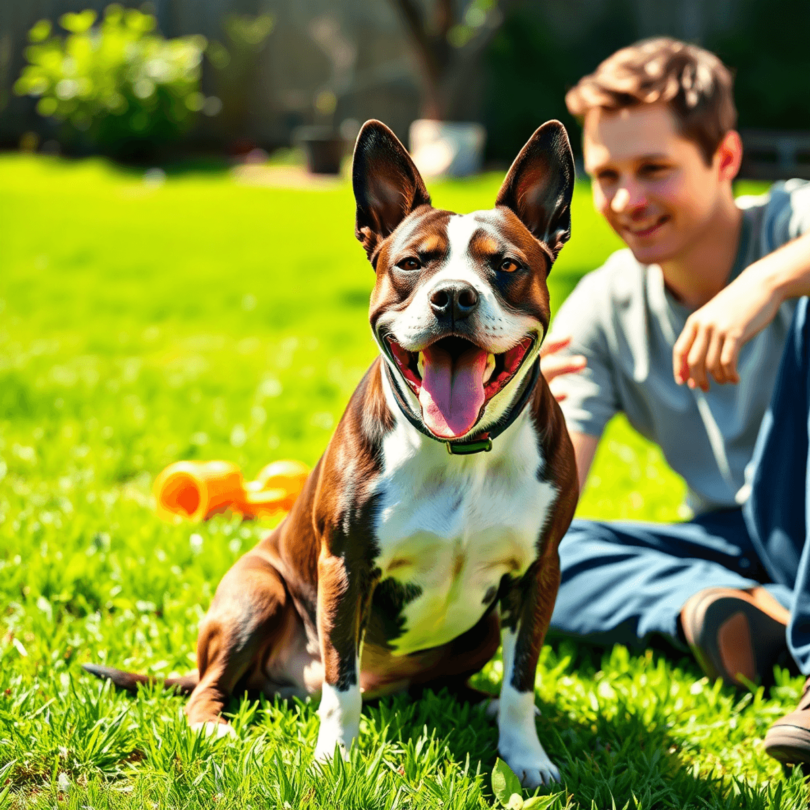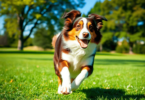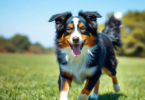Top American Staffordshire Terrier Training Tips
American Staffordshire Terriers, affectionately known as AmStaffs, are renowned for their loyalty, intelligence, and affectionate nature. These strong-willed companions thrive on close bonds with their families, making effective training crucial for a harmonious household.
Why is Training Important?
- Establishes Boundaries: Training sets the groundwork for acceptable behavior.
- Enhances Communication: Clear commands foster understanding between you and your AmStaff.
- Promotes Confidence: Well-trained dogs feel secure in their roles within the family.
With the right training methods, you can raise a well-behaved and happy AmStaff. This comprehensive guide to AmStaff training tips will explore effective strategies for American Staffordshire Terrier training, ensuring your furry friend becomes the best version of themselves!
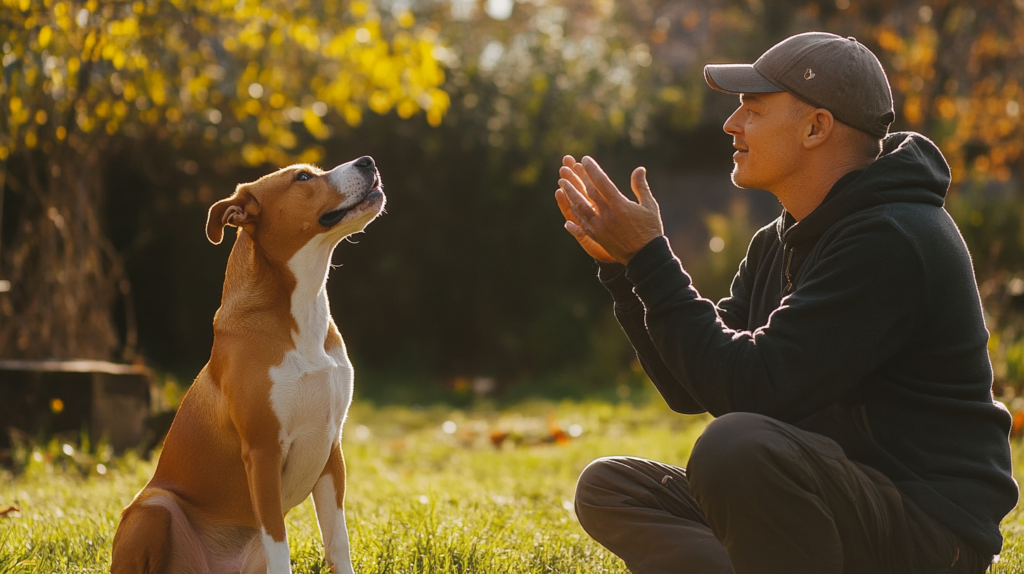
Understanding the American Staffordshire Terrier Learning Style
American Staffordshire Terriers (AmStaffs) are a unique blend of loyalty, affection, and intelligence. Understanding their learning style is key to successful training.
1. Loyal and Affectionate Nature
AmStaffs thrive on companionship and form deep bonds with their families. This breed characteristics make them eager to please, which can be harnessed during training sessions. Positive interactions enhance their responsiveness to commands.
2. Strong Temperament and Intelligence
Known for their strong-willed personality, AmStaffs possess an impressive level of intelligence. This duality can present challenges; they may push boundaries while simultaneously grasping new concepts quickly. Engaging methods in training cater to this intellect while channeling their energy positively.
3. Common Behavioral Traits and Needs
AmStaffs often display playful exuberance coupled with moments of stubbornness. Regular physical activity and mental stimulation are essential to keep them well-adjusted. Addressing their needs ensures a balanced environment conducive to learning.
Recognizing these traits shapes the approach in how to train an American Staffordshire Terrier. Align training strategies with their natural tendencies for optimal results, setting the stage for a harmonious relationship between you and your four-legged companion.

Establishing Yourself as the Pack Leader
Establishing yourself as the pack leader is crucial in ensuring a well-behaved AmStaff. This role creates a foundation of trust and respect, essential for effective dog training. Here’s how you can assert your authority without resorting to harsh methods:
- Consistency is Key: Use the same commands and cues consistently. This clarity helps your AmStaff understand expectations.
- Set Boundaries: Teach your dog which behaviors are acceptable. For example, no jumping on furniture unless invited.
- Reward Calm Behavior: Acknowledge and reward your AmStaff when they exhibit calmness during training sessions or around distractions.
- Lead by Example: Show confidence in your commands and actions. AmStaffs thrive under leadership that is both assertive and nurturing.
Training AmStaffs requires gentle firmness. Patience paired with these techniques fosters a strong bond while establishing you as their trusted guide.
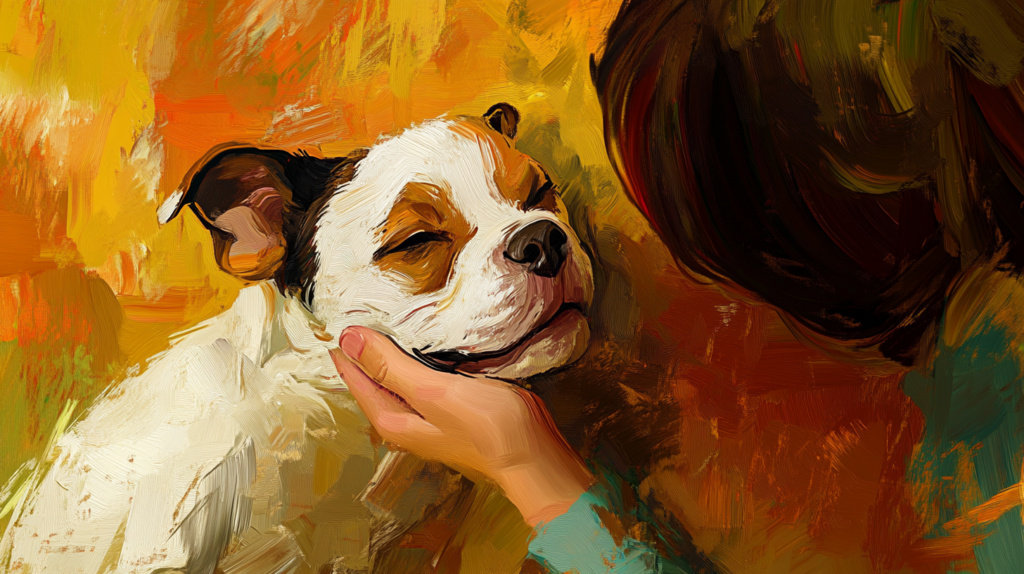
Using Positive Reinforcement for Effective Training
Positive reinforcement is a powerful tool you can use to train your AmStaff! This method focuses on rewarding good behavior, creating a positive learning environment for both you and your furry companion.
How It Works
AmStaffs are known for their affectionate nature and eagerness to please. When you use rewards-based training, you’re tapping into their desire for approval. This means they’re more likely to repeat behaviors that earn them praise or treats.
Effective Rewards
Consider these popular rewards that resonate with AmStaffs:
- Praise: A simple “Good boy!” or “Well done!” can work wonders.
- Treats: Small, tasty snacks specifically designed for training can motivate your pup.
- Playtime: Engaging in a favorite game as a reward can reinforce positive actions.
Benefits of Positive Reinforcement
Choosing this approach offers numerous advantages:
- Encourages a strong bond between you and your AmStaff.
- Reduces fear-based reactions, leading to a more confident dog.
- Promotes better retention of commands and tricks.
Embrace the joy of training with positive reinforcement. Your AmStaff will not only learn effectively but also enjoy the journey together!
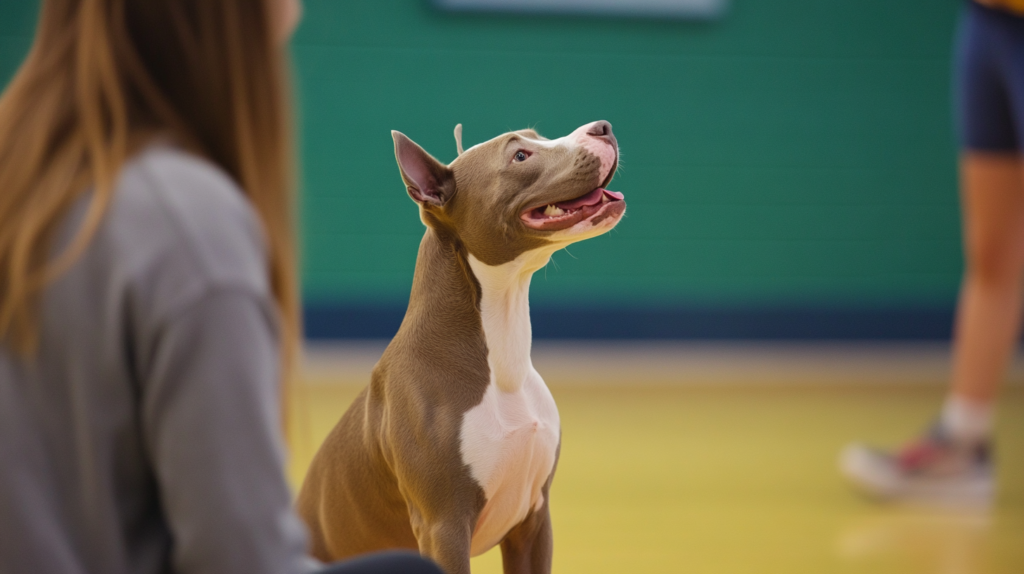
The Power of Consistency in Training Your AmStaff
Consistency is the secret sauce to successful AmStaff training. Dogs thrive on routine, and providing consistent commands reinforces learning retention. Here’s why it matters:
1. Clear Communication
Using the same words and gestures helps your AmStaff understand what you expect. For example, always saying “sit” instead of mixing it up with “down” creates clarity.
2. Structured Training Schedule
Establishing a regular training routine—aiming for short sessions (10-15 minutes) multiple times a week—keeps your furry friend engaged and eager to learn.
3. Reinforcement of Commands
When you consistently practice AmStaff training commands, they become second nature to your dog. This not only boosts their confidence but also strengthens your bond as they begin to respond without hesitation.
Incorporating these elements into your training regimen paves the way for a well-behaved and happy AmStaff, ready to tackle new challenges!
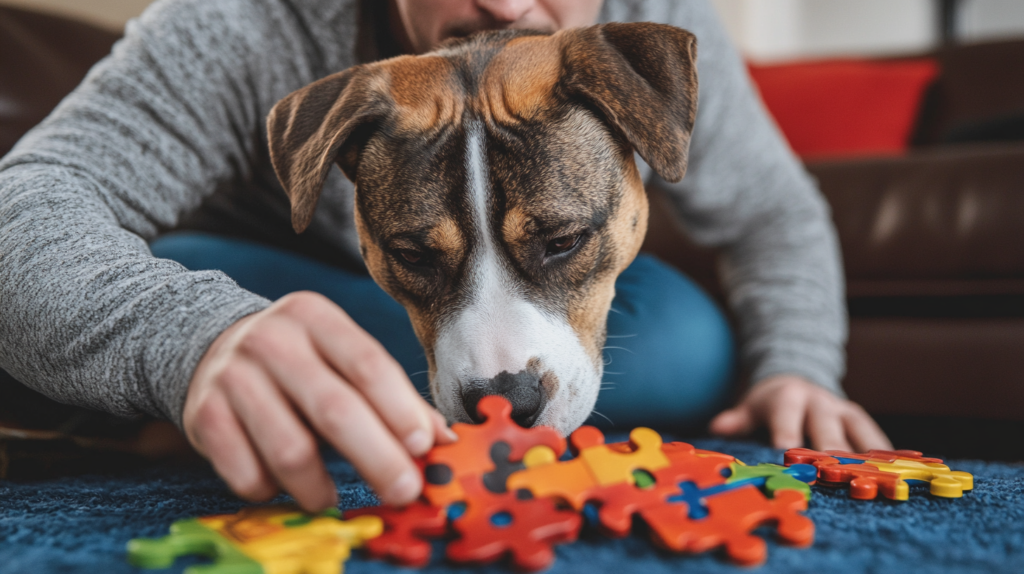
Early Socialization: Setting Your AmStaff Up for Success
Early socialization is a vital step in ensuring your American Staffordshire Terrier grows into a well-adjusted adult. This phase lays the groundwork for a confident, friendly, and adaptable dog. Here are some benefits of early socialization:
Benefits of Early Socialization
- Confidence Building: Exposing your AmStaff to various people, animals, and environments helps them feel secure in different situations.
- Behavioral Prevention: Proper socialization can prevent behavioral issues like fearfulness, aggression, or anxiety later in life.
- Enhanced Social Skills: Regular interaction with other dogs and pets fosters good manners and reduces the likelihood of aggressive tendencies.
To effectively socialize your AmStaff, consider these recommended activities:
Recommended Activities for Socializing Your AmStaff
- Meet-and-Greets: Arrange playdates with other well-behaved dogs to encourage positive interactions.
- Public Outings: Take your pup on trips to parks, pet-friendly stores, or outdoor events. Familiarity with different environments is crucial.
- Exposure to Various People: Invite friends and family over to meet your AmStaff. Diverse experiences help reduce fear or anxiety around strangers.
By prioritizing early socialization for your AmStaff, you set the stage for a happy and harmonious life together. Investing time in these activities not only strengthens your bond but also paves the way for successful training down the line.
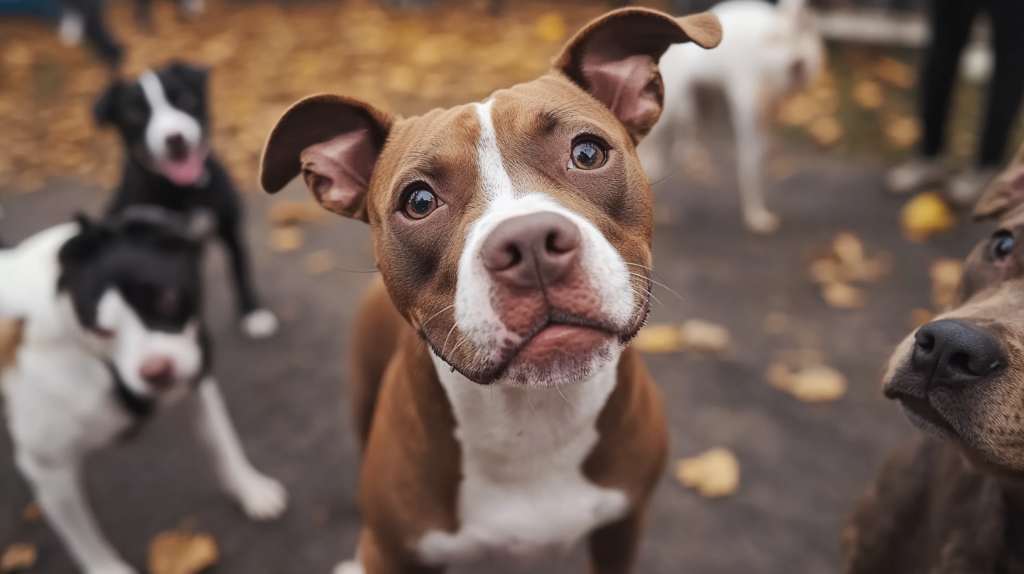
Mastering Basic Obedience Commands with Your AmStaff
Training your AmStaff in basic commands is a crucial step in building a strong bond. These commands not only improve communication but also ensure safety and good behavior. Here are some important commands to focus on:
1. Sit
A fundamental command that sets the stage for further training. Teach your AmStaff to sit by holding a treat above their nose and moving it back over their head. As they sit, reward them immediately.
2. Stay
This command helps to keep your pup in one spot. Start by commanding them to sit, then take a few steps back while saying “stay.” Gradually increase the distance and duration before rewarding.
3. Come
A critical command for safety. Use a leash initially, gently pulling towards you while enthusiastically calling “come.” Reward when they reach you, reinforcing the positive behavior.
To make the most of your training sessions:
- Duration and Frequency: Keep practice sessions short, around 10-15 minutes. This allows your AmStaff to remain engaged without losing focus.
- Repetition is Key: Regular practice helps cement learning. Aim for several sessions each day, mixing in different commands to keep things fresh and exciting.
Incorporating these strategies into your routine lays the groundwork for advanced training later on. Embrace the journey of learning together!
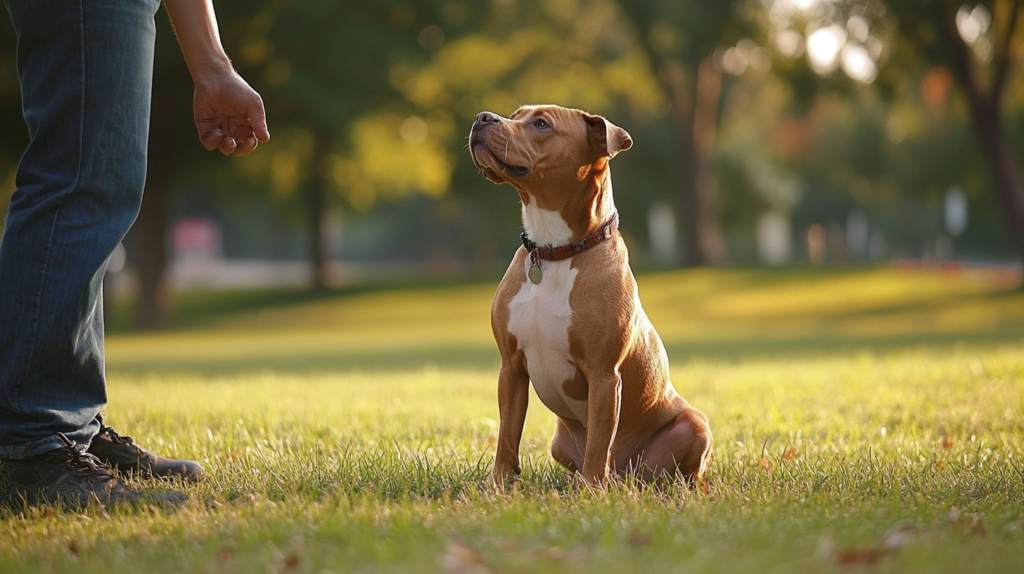
Taking It Up a Notch: Advanced Training Techniques for Your AmStaff
Ready to elevate your AmStaff’s training? Transitioning from basic commands to advanced commands is an exciting journey.
1. Advanced Commands
Start with heel and down. These commands not only enhance obedience but also strengthen the bond between you and your pup. Practice in short bursts (5-10 minutes), gradually introducing distractions to challenge their focus. For more insights, check out this comprehensive guide on advanced dog training techniques.
2. Agility Training
This fun, dynamic training method taps into your AmStaff’s natural athleticism. Set up an obstacle course with jumps, tunnels, and weave poles. Incorporate agility training into your routine to keep your dog mentally stimulated while improving coordination and confidence.
3. Scent Detection Training
Unleash your AmStaff’s inner detective! This activity hones their incredible sense of smell. Hide treats or toys around the house or yard and encourage them to find them using their nose. Celebrate each successful find to foster their enthusiasm.
Embrace these advanced techniques and watch your AmStaff thrive as they learn new skills while having a blast!
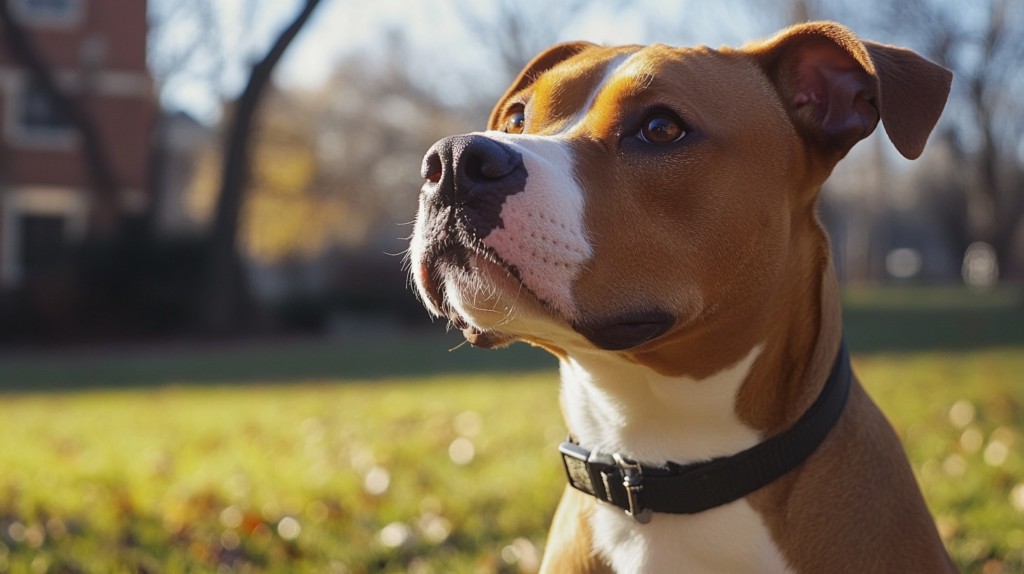
Addressing Behavioral Issues in Your AmStaff: What You Need to Know
American Staffordshire Terriers are known for their loyalty and affectionate nature, but like any breed, they can exhibit behavioral challenges. Identifying common behavioral issues early on is essential for effective training and happy coexistence.
Common Behavioral Problems
- Aggression: This can manifest in various situations, often stemming from fear or territorial instincts. Proactive measures for aggression prevention include proper socialization and consistent training.
- Anxiety: AmStaffs might experience anxiety due to changes in their environment or routine. Signs include excessive barking, destructive behavior, or withdrawal.
Addressing Issues Promptly
Addressing these behaviors as soon as they appear is crucial. Utilize positive reinforcement techniques to redirect negative behaviors and encourage calmness. Engaging a professional dog trainer familiar with AmStaffs can provide invaluable insights tailored to your dog’s unique temperament. Understanding these issues paves the way for a happier, well-adjusted canine companion.

Leash Training Essentials for Your American Staffordshire Terrier: A Step-by-Step Guide
Leash training is a crucial skill for your AmStaff. A well-trained dog on a leash not only enhances safety but also ensures enjoyable walks. Here’s why leash control matters:
- Safety First: Proper leash control prevents your AmStaff from darting into traffic or approaching other dogs aggressively.
- Bonding Time: Walking together strengthens your relationship and allows for shared exploration.
Techniques for Effective Leash Training
Choose the Right Equipment:
- Use a comfortable, sturdy collar or harness designed for AmStaffs.
- Opt for a standard leash instead of retractable ones to maintain better control.
Teach the Heel Command:
- Start by holding the leash with a relaxed grip.
- When your AmStaff begins to pull, stop walking immediately.
- Wait until they return to your side before resuming the walk.
Reward Good Behavior:
- Use treats or praise when your AmStaff walks calmly beside you.
- Reinforcement encourages them to repeat this behavior.
Practice Makes Perfect:
- Keep practice sessions short (5-10 minutes) to maintain their focus.
- Gradually increase distractions as they become more proficient.
By implementing these techniques, you’ll foster good habits during walks and set the stage for successful AmStaff behavioral training. A little patience goes a long way in transforming your walking experience!
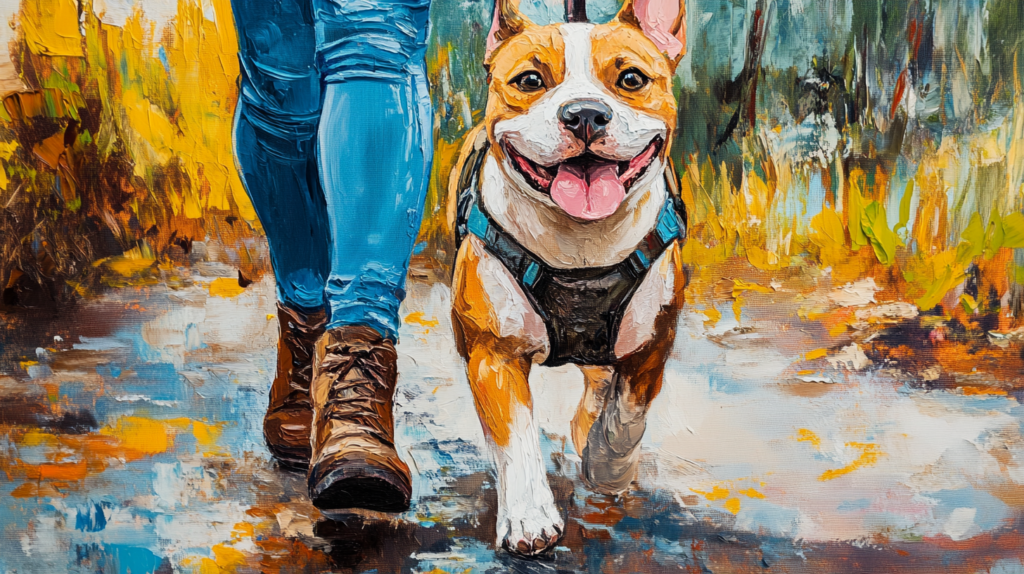
Training an American Staffordshire Terrier Puppy: Tips and Techniques That Work Like Magic!
Starting your American Staffordshire Terrier puppy training at the ideal age of 8 weeks sets the foundation for a well-behaved companion. Early training techniques are crucial for shaping their behavior and social skills. Here’s how to make it magical:
1. Socialization
Introduce your puppy to various environments, people, and other animals. This exposure builds confidence and reduces anxiety later in life.
2. Short Sessions
Keep training sessions brief (about 5-10 minutes) to maintain your puppy’s attention. Frequent short sessions are more effective than longer ones.
3. Positive Reinforcement
Use treats, praise, and playtime as rewards for good behavior. This encourages your pup to repeat desired actions.
4. Basic Commands
Focus on simple commands like “sit,” “stay,” and “come.” These foundational skills create a strong communication bond.
With dedication and patience, your AmStaff puppy will thrive on the exciting journey of training!
Common Mistakes to Avoid During Training
Training your AmStaff can be a rewarding journey, but there are common pitfalls to dodge for success. Keep these tips in mind:
- Negative Reinforcement Consequences: Using harsh methods can lead to fear and anxiety. Instead, focus on positive reinforcement techniques that foster trust and affection.
- Avoid Frustration During Training: Patience is key. If you feel frustrated, take a break. Emotions can affect your AmStaff’s learning process.
- Inconsistent Commands: Mixed signals confuse your pup. Stick to clear commands and ensure everyone in the household uses the same vocabulary.
- Ignoring Behavioral Issues: Address problems like barking or aggression promptly. Ignoring them can lead to larger issues down the road.
Remember, successful training requires dedication and understanding!
FAQs (Frequently Asked Questions)
What are the key characteristics of the American Staffordshire Terrier?
American Staffordshire Terriers (AmStaffs) are known for their loyal and affectionate nature, strong temperament, and high intelligence. They require effective training to ensure they develop into well-behaved companions.
Why is it important to establish yourself as the pack leader during AmStaff training?
Establishing yourself as the pack leader is crucial in AmStaff training as it helps assert authority and creates a structured environment. Techniques such as consistent commands and positive reinforcement can help establish leadership without being harsh or aggressive.
How does positive reinforcement work in training an AmStaff?
Positive reinforcement involves rewarding your AmStaff for desired behaviors, which encourages them to repeat those behaviors. Effective rewards can include praise, treats, or playtime, making training a positive experience that strengthens your bond.
What are some essential basic obedience commands for my AmStaff?
Essential basic commands for your AmStaff include ‘sit’, ‘stay’, and ‘come’. Practicing these commands regularly in short sessions will help reinforce learning and improve obedience.
What is the ideal age to start training an American Staffordshire Terrier puppy?
The ideal age to start training an American Staffordshire Terrier puppy is around 8 weeks. Early training helps set the foundation for good behavior and socialization skills.
What common mistakes should I avoid during AmStaff training?
Common mistakes to avoid include using negative reinforcement, which can lead to frustration and anxiety in your dog. Instead, focus on positive reinforcement techniques and maintaining consistency throughout your training sessions.
